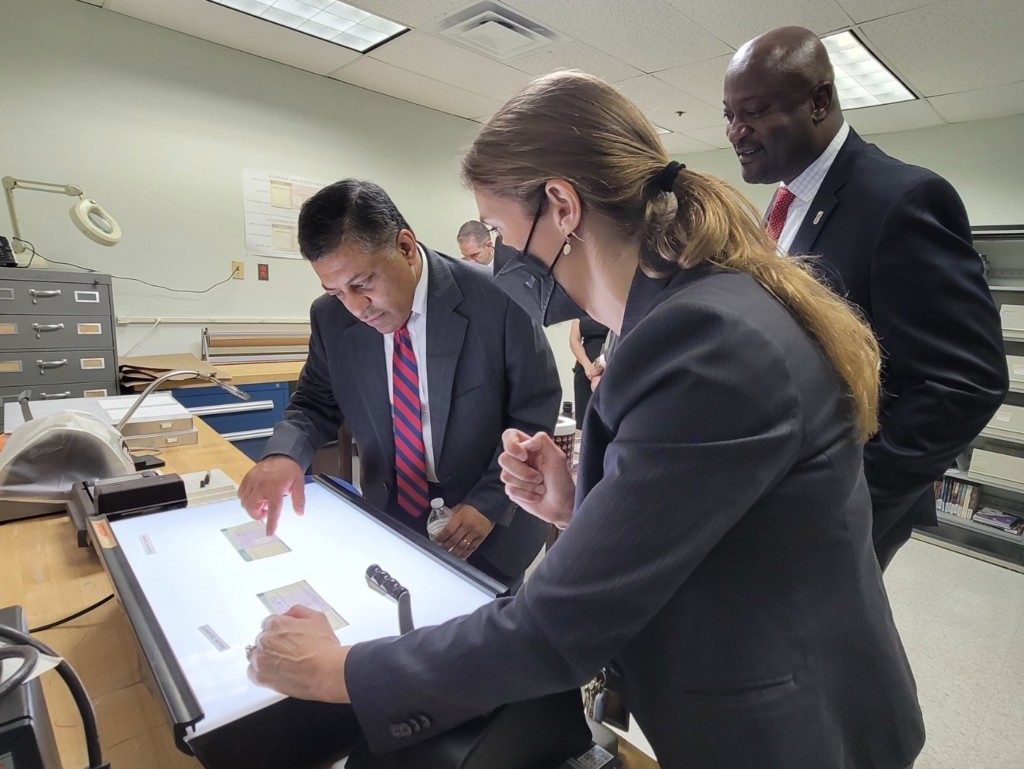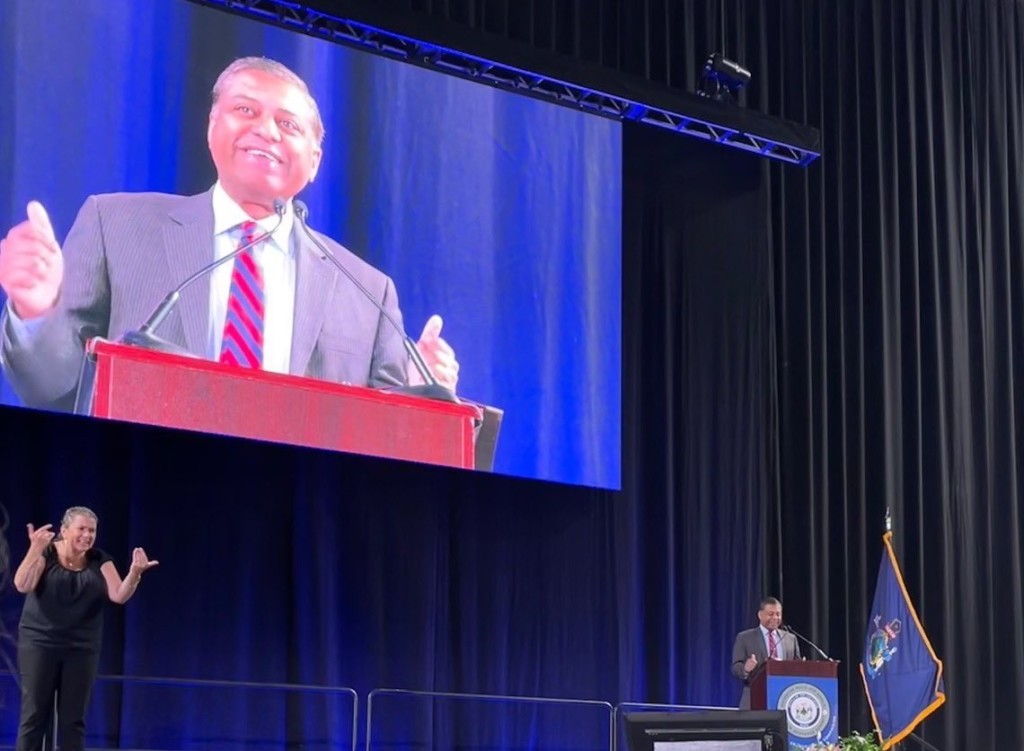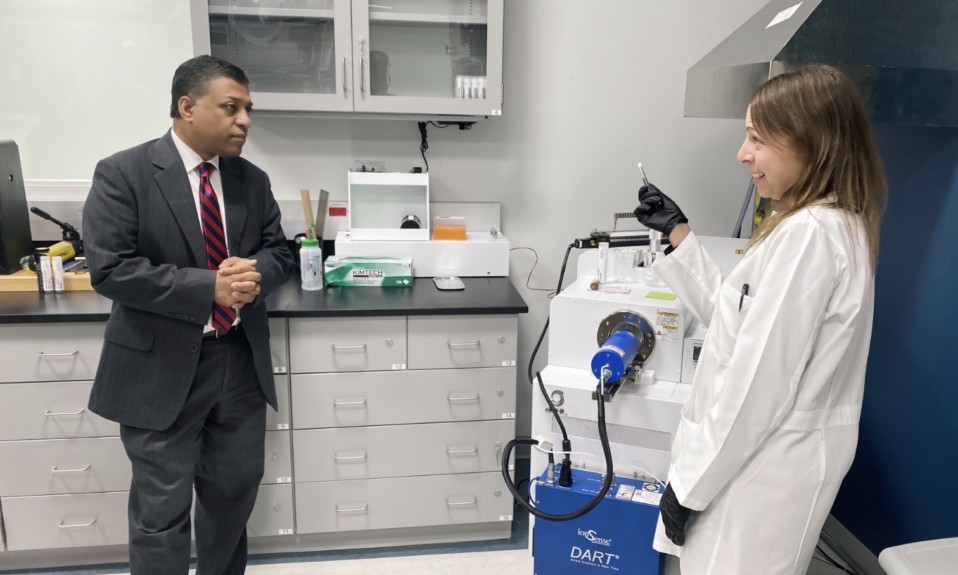In the second part of our interview with the director of the White House Office of National Drug Control Policy, he makes a compelling case for an “all hands on deck” approach to solving the riddles of addiction and mental illness
By Jason Langendorf
In the second and final part of our wide-ranging conversation with Rahul Gupta, MD, he continues to paint a vivid picture of his goals for addiction treatment and the machinations of U.S. drug policy. (Read the first part here.) Among other topics, the director of the White House Office of National Drug Control Policy (ONDCP) shares his expertise on how substance use disorder touches all corners of society and the need to take a less punitive and more therapeutic approach to addressing substance misuse.
A former clinical professor in the Department of Medicine at Georgetown University School of Medicine and adjunct professor in the Department of Health Policy, Management and Leadership in the School of Public Health at West Virginia University, Gupta is also a practicing primary care physician of more than 25 years. Born in India, Gupta grew up in suburban Washington, D.C., earned his master’s in public health at the University of Alabama-Birmingham and led state opioid response efforts while serving as health commissioner of West Virginia—key fault lines in the nation’s coast-to-coast addiction and overdose crisis.
Q. Addiction research, prevention and treatment are expensive. What is your response to those who believe that people who use drugs bring their problems on themselves, and that tax dollars shouldn’t go toward helping those folks?
A. First of all, it would be unfortunate for people to think like that, and here’s why: It’s a core American value to help the person next to you and provide that assistance. We’ve done that as a society. We have so many programs for the federal, state and local levels that do that. We do it all the time—our nonprofit sector is based on that. So our core values include helping your neighbor, helping those people who need help.
“I’ve seen plenty of people from all walks of life—rich, poor, black, white, brown, Republican, Democrat, East, West—have families that have been decimated by this crisis.”
—Rahul Gupta
Beyond that, we know what works and what doesn’t work. We know the science of addiction and mental health. And the fact is that this isn’t really a red-state issue or a blue-state issue. This has become America’s issue. This is no longer a partisan issue. Having practiced in West Virginia the past 10 years or so, I’ve seen plenty of people from all walks of life—rich, poor, black, white, brown, Republican, Democrat, East, West—have families that have been decimated by this crisis. So, this is no longer an issue where we can afford to have a perspective or a view that allows the killing of Americans. We just can’t.
But from an economic standpoint—if that’s what works for some people—here’s a number: We’re losing a trillion dollars from our economy each year, according to research, because of this epidemic. The National Bureau of Economic Research recently put out, when they compared the pre-pandemic labor-force participation numbers to the pandemic numbers, that up to 26% of labor-force participation loss was related to substance use disorders. And the majority of people that are perishing, of course, are between 25 and 54 years of age. We have to understand that even if an adversary were to attack our nation, they could not do any better than that.
It’s really important for us to understand as Americans not only the scope, breadth and width of this issue, but also the fact that we have to approach this issue as the issue approaches us—in a very non-partisan way, not caring about economics. We have to stop caring about those things, make [the response] individual-centric. And that’s probably one of the reasons that harm reduction policies right now have bipartisan support. This issue has wide bipartisan support. People understand it—on the Hill, states, everywhere else—that no one is immune or protected, no matter who you are.
Q. Still, that development has been relatively new. The public embrace of harm reduction and changing policy are relatively new. Given what we know about policy that saves and improves lives, would your office and the administration support some level of legalization or decriminalization of certain drugs?
A. I’ll go back a little bit to the Unity Agenda and State of the Union. First, the President clearly put both the opioid and substance crisis, as well as mental health, in the top piece of his Unity Agenda. Part of the Unity Agenda is to make sure we are removing barriers—we are working to move forward in a bipartisan way to improve—and he really underscored that.

What we are trying to also do at the same time is to make sure that we are constantly engaging in understanding the research behind clinical effectiveness of any emerging harm-reduction practices. That’s an important component of the work as well. Because what we don’t want to do is say, “Well, that doesn’t work” or “This doesn’t work,” just because we don’t think it works. Being evidence-driven and data-based and science-oriented means you adhere to those principles. That’s one of the reasons the present strategy includes these three high-impact harm reduction aspects. It’s a very simple goal: to save lives. And as our understanding develops through the research of a variety of harm reduction techniques and their clinical effectiveness, we’re going to continue to be engaged in that.
Q. What policy, initiative or accomplishment to come out of your office so far are you most proud of or feel has the potential to make the greatest impact?
A. I’ll mention a few things, because it’s complex. There’s going to be no silver bullet. I say that often because there’s not one single thing that we’re going to be able to address in this crisis stage, a situation that has permeated the minds of Americans for decades.
But, of course, there is this administration’s commitment to harm reduction strategies, as has been delineated in the strategy. Another one that I think is really important is to make sure that for treatment medications for opioid use disorder, we’re creating universal access by 2025. We’re working towards that, making great strides on that right now. Only 1 out of 10 people today are able to get access to treatment that’s needed, and we’re hoping and looking forward to 100% access to treatment by 2025.
We have done a number of things—for example, telehealth provisions, and we’re working to make those permanent, making sure that prescribers can prescribe up to 30 prescriptions of buprenorphine without having to go through the X waiver. I myself am an X waiver physician, went through the training for an X license. But we’re trying to make sure that we are removing the barriers—so much so that the President called for removing barriers for doctors to do their practice. And we’re removing those barriers by expanding practice guidelines. We’re making sure that people have methadone take-home programs, making sure that you can prescribe through telehealth and phone consultations. Methadone vans that go out to offer access, especially for populations that are underserved and underrepresented—these things are important.
“If the President’s strategy is implemented, we expect that we can halve the amount of deaths by 2025 and have tens of thousands of people saved.”
On the supply side, we [want to avoid] looking at this as a whack-a-mole problem, from drug to drug, but instead as more of a commercial disruption problem. Understanding comprehensively that what drives these transnational criminal organizations is not ideology, but profits—pure profits. So, we’re taking a very unique perspective: to go after commercial disruption, to dismantle and obstruct the trafficking and the entire process, from precursor supply chain all the way to trafficking and distribution. It’s going to take all of this—an approach at the intersection of public health and public safety—to solve the crisis, because it’s so complex and multifaceted.
Q. Any final thoughts—a treatment takeaway that you’d like to leave us with?
A. One important piece that I think we’re very committed to is the criminal justice side of this. We know and recognize that, obviously, from this office and others, the policies of the past have not worked. Meaning, we are now looking at a new approach in every aspect, from diversion programs to reentry programs to provision of treatment behind the walls. As you may know, the President has issued pardons to people for nonviolent drug use.
I think it’s also really important to understand the sort of racial impact and societal impact that incarceration has had on the soul of this nation, related to drug policies. That’s one thing we’re very committed to working on, making sure that we’re doing everything we can and that the President, in his power, is doing everything he can to ensure that our approach aligns with what we need to do to get all people the help they need, the resources they need.
But to answer your question, I keep very simple goals. One, we’ve got to stop people from dying unnecessarily. And we know that tens of thousands of people are perishing, [one] every five minutes. When I say that, I feel it. That’s why I say that every five minutes, when someone dies, these are friends, family, these are neighbors, these are school teachers, people I’ve known, people most of us have known. It is just heart-wrenching every time, and tragic. So, it’s important to me, very much, that we do everything we can to prevent these deaths. Now, I will say that the implementation of our strategy is critical. Because if the President’s strategy is implemented, we expect that we can halve the amount of deaths by 2025 and have tens of thousands of people saved.

The second piece: We want to make sure that we’re building an infrastructure, one that we lack today. And that means that anyone and everyone who wants to get treatment is able to get treatment when and where they want it.
The third piece is, of course, making sure that we have a system in place that is not only going after drug profits, but that we’re using the entirety of the United States government—meaning a unity of effort—to ensure that our efforts are focused on this profit part of the trafficking. Because that allows us to focus on factors that elicit profit, as opposed to factors that punish people suffering from addiction through the criminal justice system.













